In this article, we cover the fundamentals of installing a new backsplash on a kitchen wall, as well as the price of the backsplash.
Backsplashes serve more purposes than just protecting the walls next to countertops, stoves, and ovens. They also take a lot of money from a wallet or bank account to purchase and install, even if done as a do-it-yourself (DIY) project. Backsplashes vary in materials used, cost, and installation techniques required.
Here are ten reasons for a backsplash’s high price. See How to Tile a Backsplash Easily.
Why is Backsplash So Expensive?
Often Part of a Larger Project
In most cases, installing a backsplash is a multi-step process. Instead, this activity often occurs as part of a larger kitchen remodeling or home improvement project. It costs between $12,500 and $35,000 on average to remodel a kitchen, though some renovations can cost much more.
Similar to remodeling projects in other parts of the house, the cost of kitchen remodels often exceeds the budget planned for them.
Indeed, the plumbing and electrical work, tiles, countertops, and other components make bathrooms and kitchens the most expensive spaces within a house for updating and improvement.
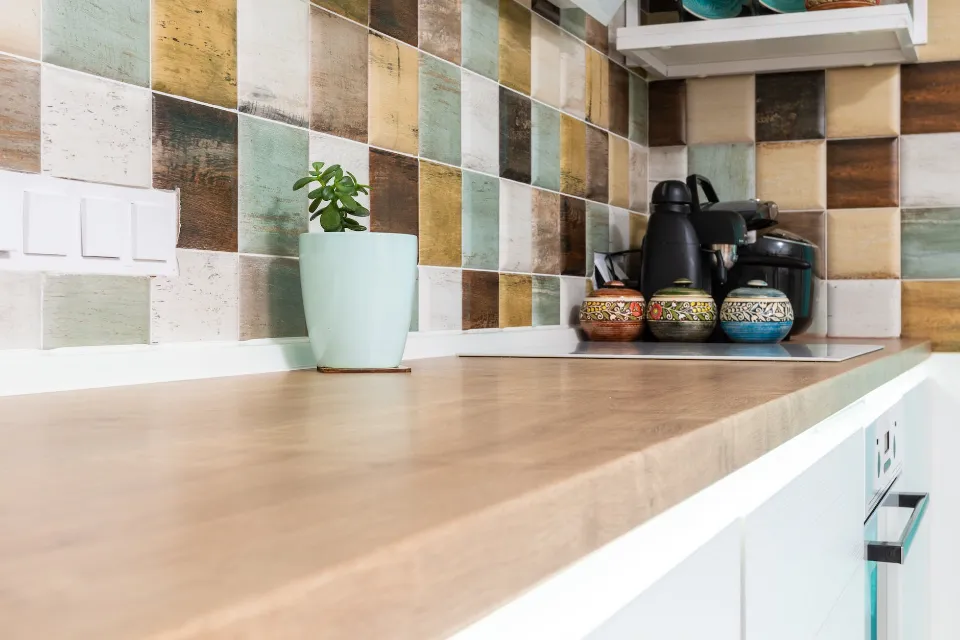
Countertops May Need to Change, Too
Depending on the presence of an already existing backsplash, the ability to remove it, and the area where it meets the countertop surface, this job also may require the removal and replacement of countertops.
The task might be straightforward if there is currently no backsplash. Simply install the backsplash. Of course, this assumes that the homeowner has no immediate plans to replace their countertops anytime soon.
If they do, it makes perfect sense to finish that project before mounting a backsplash that will extend down to touch the counter. Otherwise, the effort required to remove the countertop in the future may crack the tiles or other backsplash materials.
The backsplash may be damaged in highly visible areas if workers remove the old, warped wooden countertop too quickly.
Budgeting for a new countertop to go with their new backsplash is advised unless the homeowner has conveniently kept a large supply of the original backsplash material on hand for just such a situation.
Costly Glass
This backsplash, which is made of thin pieces of glass, provides a lovely substitute. Some glass tiles have mosaic designs applied to the backs of them in addition to translucent glass that has been fired and finished.
These glass options are one of the priciest backsplash options; typically, they cost $7 to $30 per square foot. Beyond raw materials, the installation of a glass backsplash usually exceeds $30 per square foot.
Remember that this is an industry average, not the price in a particular market. Glass, according to some, offers an environmentally friendly alternative. Mosaic tiles made from recycled materials by imaginative designers are occasionally used.
Costly High-Quality Ceramic Tile
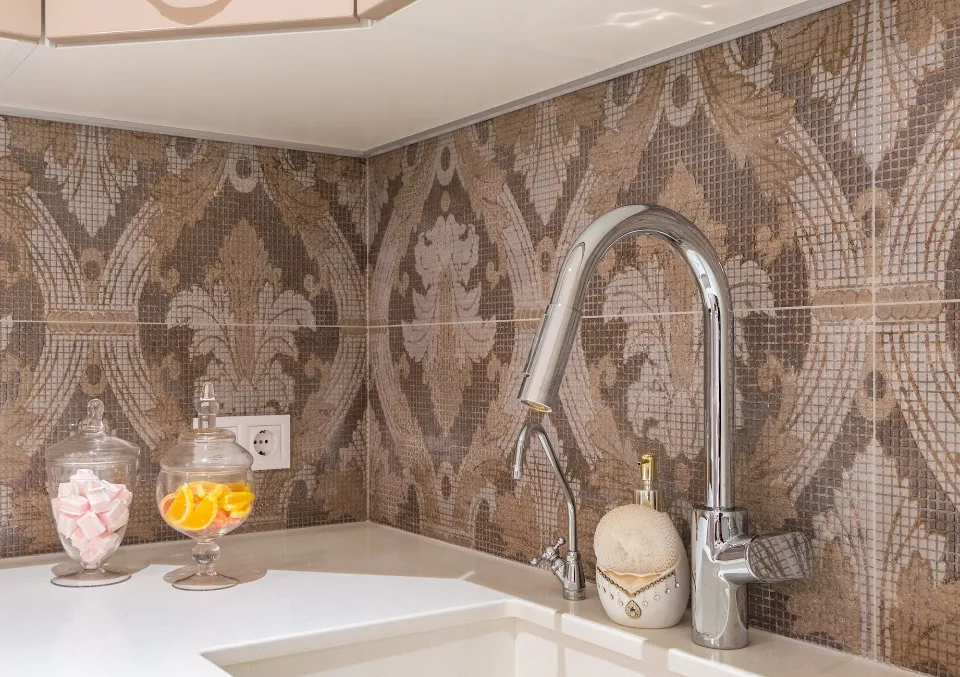
For those who are adding or replacing a backsplash, ceramic tile continues to be a common alternative. The market offers a wide variety of ceramic tile options.
Some are uninspired and simplistic. This description applies to glossy, glazed ceramic tiles in popular colors. Others are fantastic and in style.
On the other end of the spectrum from the least expensive to the most expensive ceramic tile options are hand-made, inlaid ceramic tiles, which come in a variety of finishes including matte, crackle, hand-painted, large format, and mosaic.
These clay-based objects are typically fired at a high temperature. Then, after another trip to the kiln, they are given a liquid glaze and baked into the clay until hard.
Compared with glass, many basic ceramic tiles offer a more economical option. The price of many tiles ranges from $4 to $8 per square foot, and they are typically simpler to install than glass tiles.
Costly Quartz, Marble, Or Granite
The majority of quartz or marble backsplashes cost more than $90 per square foot to buy, prepare, and install. The price per square foot for granite is between $50 and $75.
Quartz is a manufactured stone with distinctive patterns that can cost anywhere between 20% and 40% more than granite. The material’s veining and any additional patterns or designs may affect these prices.
The geographic area, the type of stone used, the supplier, and the season are additional variables that affect the cost. A custom-made, high-quality backsplash could cost more than $200 per square foot.
Time Or Labor Involved
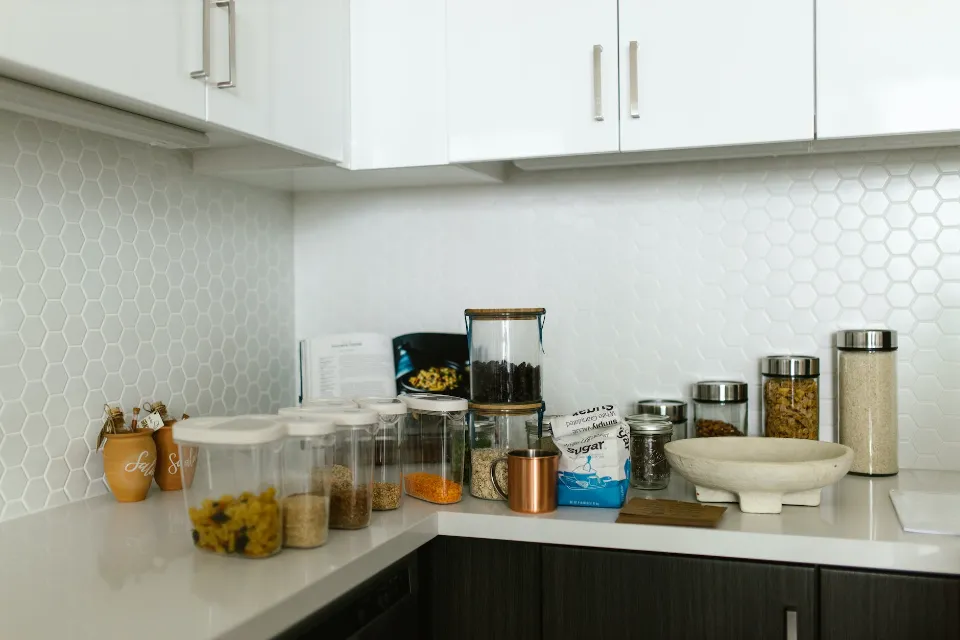
No matter what kind of backsplash a person chooses, they must budget for the time and labor required.
A professional installer experienced in cutting, placing, and arranging designs may be the best choice if the kitchen has a unique layout, numerous electrical outlets and light switches, or windows.
In the same way, a professional or someone with some experience performing careful demolitions should handle the job rather than a DIY novice if the wall already has an existing backsplash that needs to be removed.
Professional installers come to work sites with all of the necessary tools in hand. They will bring what they need to complete the task, but they charge more per hour for their labor.
A novice DIYer will need to purchase, rent, or borrow the necessary tools in order to complete the installation. Among other things, these items might include a trowel, grout, cement backer board, caulk, and spacers.
The task can be completed fairly quickly by a general tile installer by laying subway tiles in horizontal rows.
May Cause Wall Damage
If there is already a backsplash, some people consider replacing the existing tiles with new ones to save a little money. It might be possible to do that, but the outcome might fall short of expectations depending on what is already there and what one plans to install.
A very thick backsplash would be produced by layering new tiles over the old surface. The better strategy is typically to take out the old backsplash. Although it is possible to perform this task as a DIY activity, one has to take great care so that they do not damage the wall to which the original tiles are attached.
This link provides some general instructions on how to take out an existing tile backsplash without harming the drywall. If there is an old backsplash there, it needs to go.
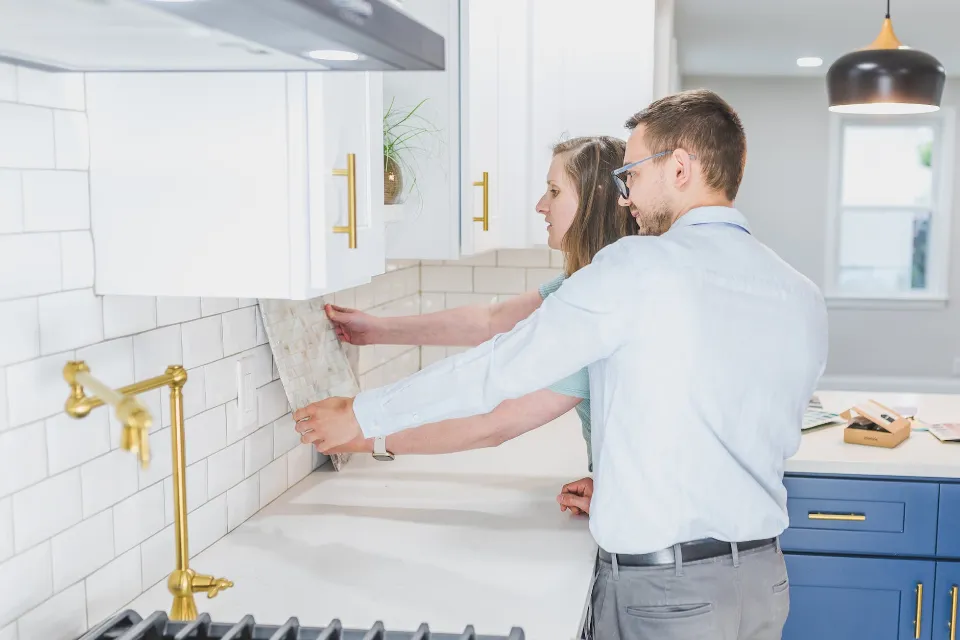
May Need to Remove Old Tile
Any attempt to remove current tiles should be carefully considered; if it seems too difficult, hire a professional. Even under ideal conditions, most tile removal projects will also remove some drywall. This is understandable considering that the grout or adhesive used on and between the tiles was intended to keep them in place permanently.
In fact, drywall damage after removal is a sign of a properly installed tile backsplash. That is the irony one encounters when deciding to remove something that has already been fastened to the drywall. They must accept that “forever” has come and gone and a new backsplash will replace the old one.
In the event that the drywall needs to be repaired, either the contractor or the do-it-yourselfer will have to do it in order for the new backsplash to stick to the old wall. Hopefully, this will be “forever,” or at least until the house is sold.
Cheaper Alternatives Cost in Other Ways
Some people choose to go a less expensive route. They may use peel-and-stick tiles or a simple coat of the cheapest paint they can find. Although these solutions might be effective, they might also have a price.
They do offer a cheap way to shield the drywall from moisture exposure if adding these to a wall in a home that needs to sell quickly. Those interested in a higher-end kitchen do look at backsplashes and might be turned off by these alternatives, however.
Paint, wallpaper, and peel-and-stick tiles all have a mediocre resistance to moisture. They will not shield these walls from continued exposure to stains, food, oils, grease, or smoke. If not applied carefully, cracks or spaces between peel-and-stick tiles may become magnets for dirt, grease, moisture, mold, and mildew.
A Necessary Part of the Kitchen
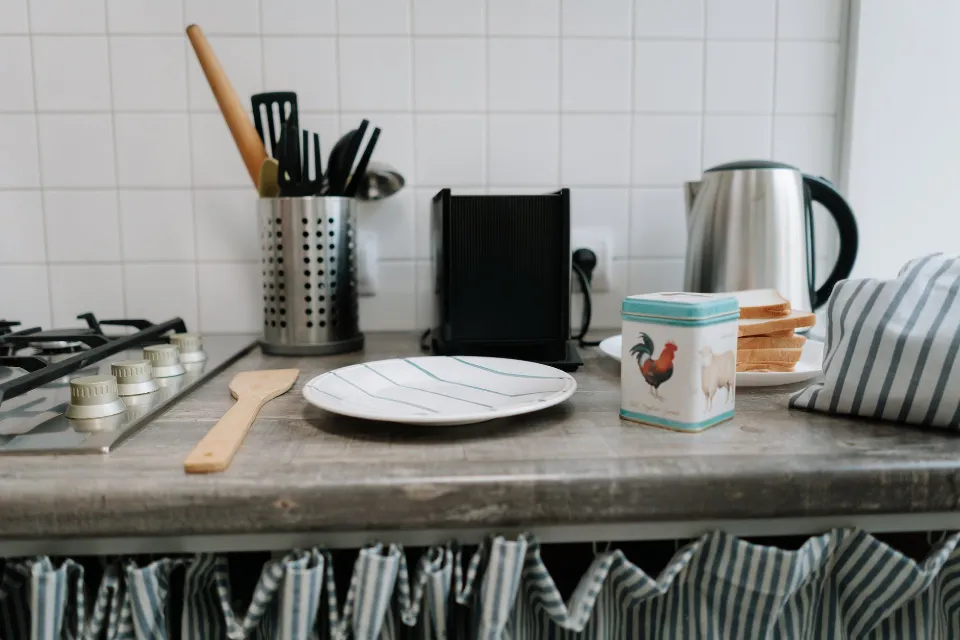
Backsplashes are more than merely decorative elements. Given the numerous exposed areas close to sinks and countertops, a high-quality and expertly installed backsplash is essential to protect these areas from cooking stains, thick grease, moisture, and other items.
It makes sense to have a backsplash behind the cooktop and close to the hood vent since these are areas where grease, spills, stains, and splashes are frequently present. However, the general rule is to save money by not installing a backsplash where it’s not visible, such as behind a refrigerator.
How Much Does a Kitchen Backsplash Cost?
Kitchen backsplash tile, one of the most popular material options, typically costs between $400 and $600 for a 16-square-foot area, according to Fixr.com. The price ranges from $300 to $400 for ceramic tiles of lower quality, and from $650 to $1,000 for materials and tiles of higher quality.
A kitchen backsplash made of mosaic tiles may cost more than $1,000 if it is custom work, premium materials are used, or the project is otherwise elaborate.
Kitchen Backsplash Cost and Factors
Costs associated with installing a new kitchen backsplash depend on a variety of variables. Look at these price factors after you have a good idea of your initial budget to determine where and how you want to spend your money.
Material
The material you use to make your kitchen backsplash is possibly the most obvious cost factor.
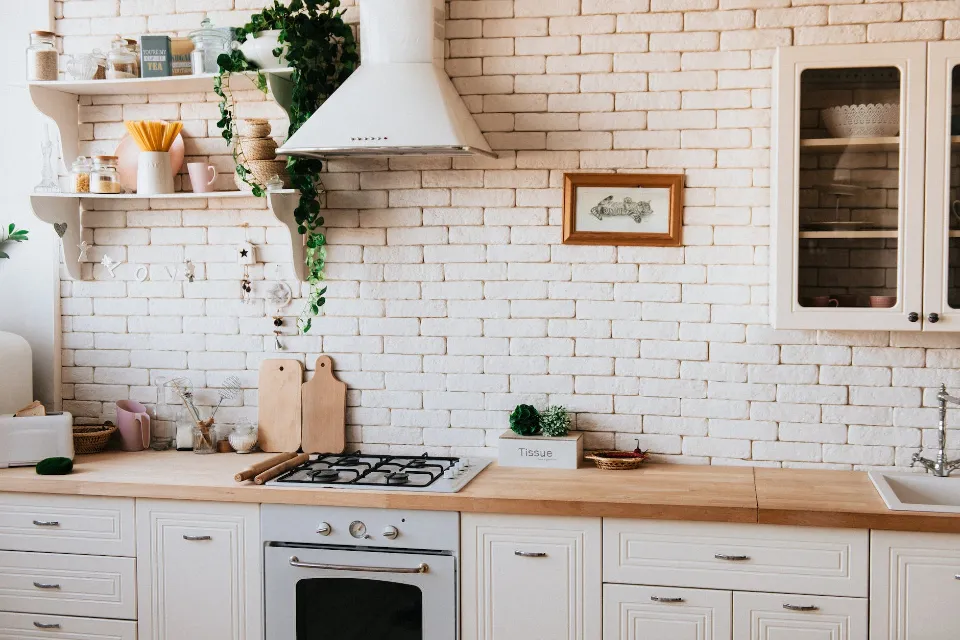
While tile—of which there are many varieties—is the most popular material—among the many that are available—there are even more materials that are not made of tile that you can use to create your backsplash.
You can select from a variety of materials, such as glass, metal, marble, granite, ceramic, porcelain, and so on.
Size
The size will undoubtedly have an impact on the price of your kitchen backsplash. Functionally, your backsplash only needs to cover a relatively small area – just the “splash zone” that surrounds your stove top, to make sure that cooking materials don’t end up on the wall.
But that doesn’t mean you can’t choose to go overboard with the size of your backsplash design; you just need to be ready to shell out more money for the extra material. As a backsplash’s most adaptable feature, size is frequently ignored. Thinking creatively about size and scope will help you create the ideal backsplash design if you’re willing to spend a little more.
Why not flaunt it by raising the backsplash’s height a little bit up the back wall if you’re spending money on backsplash tile material you love? You could even modify the aesthetic and extend your backsplash all the way to the ceiling if you really want to try something novel.
Labor
In addition to materials and size, another factor that will affect how much your kitchen backsplash costs is the labor associated with installing it.
You can choose to do your own backsplash installation to save money on labor. Depending on which kind of tile or material you choose, some backsplashes will be easier to install than others. If your tiles are very small, or if you have a very intricate design in mind, then you are better off enlisting the help of a professional to handle the tile adhesive and grout process.
Backsplash installation is a hassle to have to redo, so it might be worthwhile to spend the money to hire a handyman or installation specialist who is reasonably priced to assist you. Make sure the cost of labor is taken into account when estimating the cost of your kitchen backsplash project.
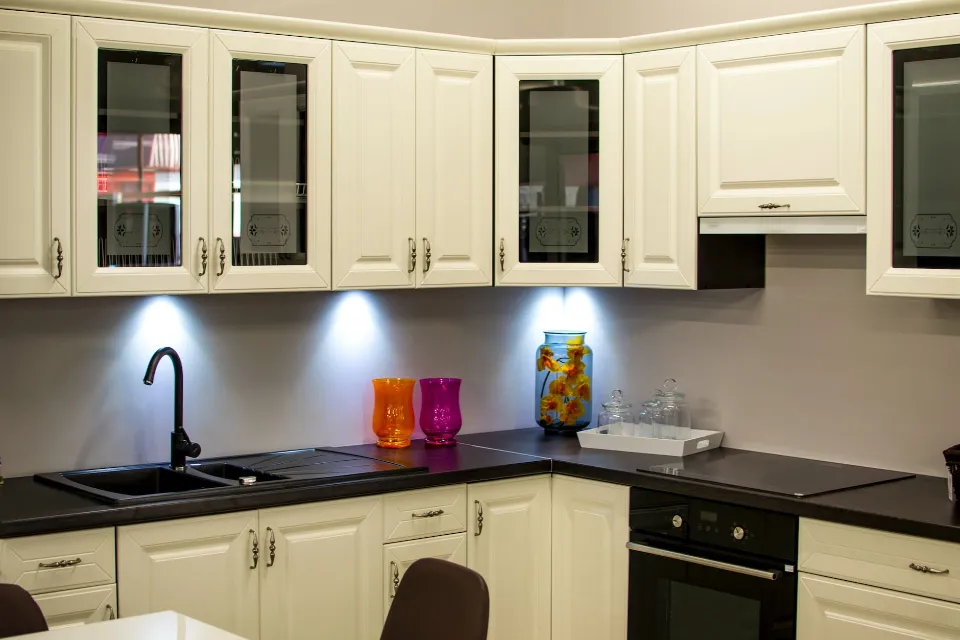
Customizations
Even when you use materials from the store, you can customize your backsplash in a number of ways by changing the design and pattern. However, if you want to go above and beyond with customization, you can decide to design your own tiles or further personalize pre-made tiles.
Setting up a focus tile is one way to get a good balance of inexpensive materials and genuine customization. This is a single tile that has some sort of special significance. It is typically either placed as the focal point in the middle of your design or offset to the side almost as a signature piece.
You can add the initials of your family members or another poignant phrase, pattern, or image. It’s a small detail that will make your backsplash distinctively your own.
Conclusion: Why is Backsplash So Expensive
A well-planned backsplash can add the finishing touch to your overall design, making your kitchen truly distinctive and original. The best part is that updating an old kitchen with a backsplash is a cheap home improvement that will add significantly to the value of the house when it comes time to sell.
As one considers how expensive a backsplash is to purchase and install, one should remember that these helpful kitchen additions do add value to a home.
FAQs
How to Do Inexpensive Backsplash?
Peel-and-stick tiles provide a cheap backsplash idea that’s easier to install than traditional tile. The self-adhesive backing can be applied directly to the wall with no grout needed. The wide range of patterns lets you recreate the look of a bold tile backsplash without the high cost.
Are Kitchen Backsplashes Worth It?
Most designers will recommend that you use a backsplash because they prevent water, grease, and other liquids from damaging the wall behind it. Designer Ashley Fong tells us that, You don’t need a backsplash, but without one, your wall is exposed and will require a higher level of maintenance.





